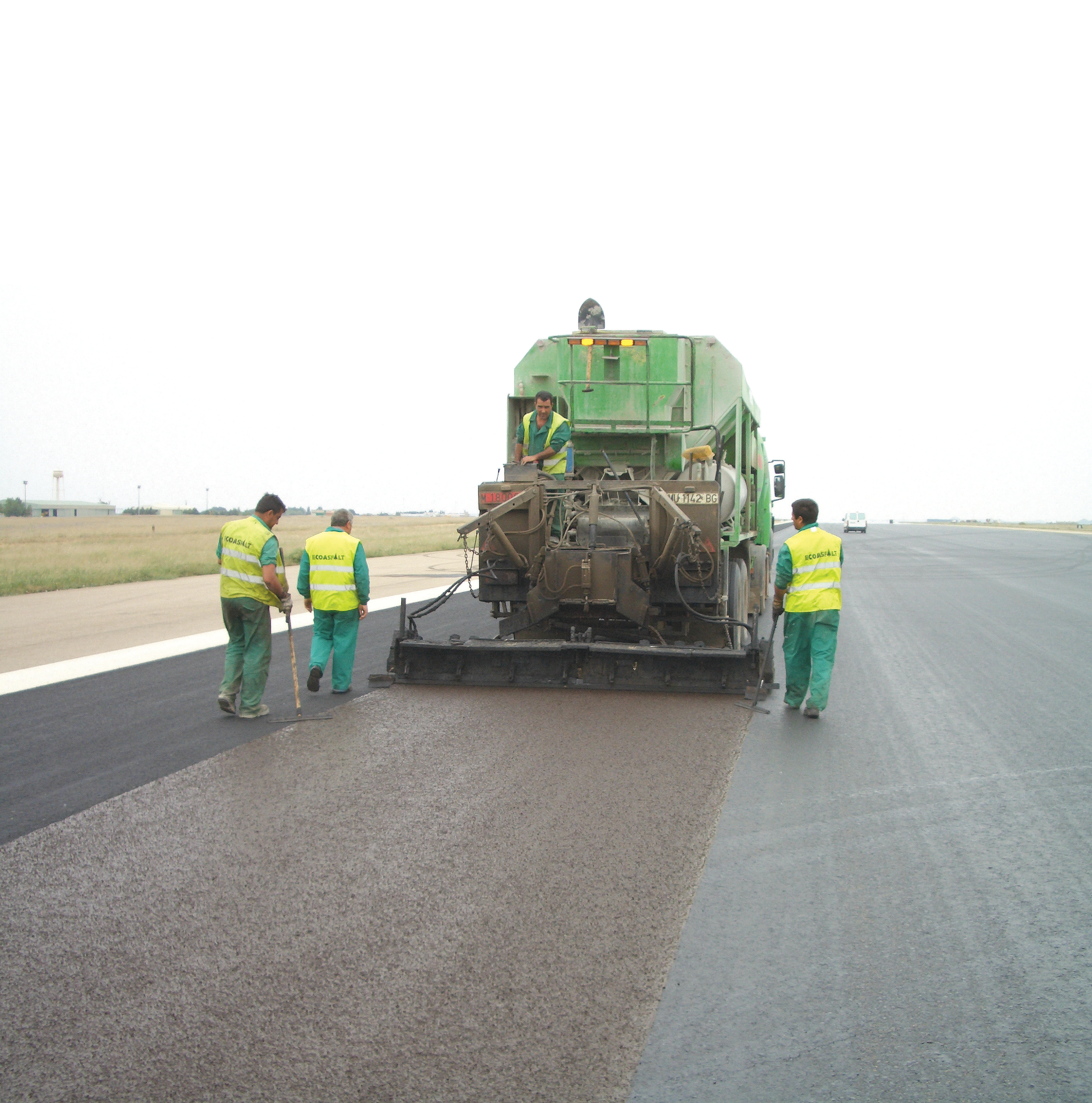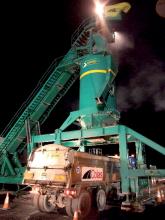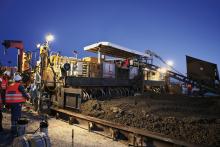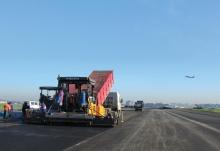
Use of slurry surfacing on Spanish runways is helping to speed up airport maintenance, while reducing use of virgin aggregates
Air traffic volumes are rising - global passenger numbers grew 7.6% last year, while cargo increased 4.5% during the same period - placing ever greater pressure on airport infrastructure. Higher traffic volumes may be good for profit margins but this rapid rise in demand creates other difficulties for the airport operators.
Spain's airports are no exception and are experiencing rapid growth thanks, mainly, to the expansion of low cost airlines. Passenger numbers in Spain reached over 193 million in 2006, up 6.6% on the year before and are predicted to rise again this year.
While this growth is welcome, it puts pressure on Spanish airport operator
AENA operates a rolling programme of runway maintenance at the 47 airports it owns in Spain. This year's programme includes the main runways at Almeria and Sevilla, both of which will be coated in a thin layer of slurry seal, rather than a full structural asphalt overlay.
Slurry seal is a cold mix material made with bitumen emulsion, high quality aggregate, water and additives, laid to a thickness of approximately 4mm. Conventional techniques would involve laying at least a 40mm thick layer of structural asphalt, which not only takes longer to apply but also uses more materials.
Slurry seal has successfully been used as an alternative to overlay on Spanish airport runways since 1993, with over 2million square metres of the material laid in that period at 17 different airports. Of those contracts, 16 have been carried out by Infraestructuras
"We have been using slurry seal on roads since 1968, and it was used on airports in the US for many years," explains CONELSAN's technical director Fernando Aguirre Muñoz de Morales. "Originally it was used only to make runways waterproof. The emulsions used in the slurries were anionic - which meant they broke with evaporation.
When cationic emulsions were developed, we could control the curing and make it faster, which led to a big improvement in the industry and new machinery and emulsions." Faster, controllable 'breaking' (the separation of water and binder) enables the contractor to lay the material and have the runway back in use within just two hours. According to Aguirre, the bitumen has to be of naphthenic origin for the emulsion to behave as required, so CONELSAN buys an emulsion from a manufacturer that uses
When it first started specifying slurry seal, AENA was concerned that, because the layer is so thin, detachment of the aggregate might occur during curing. Modified binders prevent this happening, so slurries with a larger size can be used which, in turn, improves the surface friction.
For AENA, slurry seal has proved a very cost effective alternative to a full overlay. "Slurry seal is used when there are problems with surface characteristics, and asphalt overlays when there are problems of structural performance," explains AENA's project manager and head of civil engineering Pablo Raúl Garcia Bartolomé.
The authority also specifies slurry seal on top of overlay at busy runways - for example Madrid and Barcelona - to provide friction and waterproofing. AENA does not favour 'cutting' or 'grooving' the surface to create texture (as is common in the UK, for example). "The pavement suffers with the grooves, and it gives a lot of problems with ice," explains Garcia Bartolomé.
The
Slurry seal's main advantages are cost and speed. Materials for a 4mm slurry seal cost about 70% of the price of overlay, but there are massive savings on indirect costs. "A 3km x 45m runway can be completely surfaced in a 4mm layer of slurry seal in just six nights," says Aguirre, "while a 40mm structural overlay would take between two and three months." The rapid breaking of the slurry seal emulsion allows the runway to be trafficked almost immediately, and there is no need for an incline to be made between the new material and the existing runway to allow aircraft to land while the work is under way. During overlaying, a 1o incline has to be made at the end of each night's work to allow planes to land, and then removed at the start of the next night.
One of the major costs of runway resurfacing is moving the automatic landing lights, which sit in the runway pavement with their heads flush with the surface. If the pavement is slurry sealed, they can simply be covered in plastic while the laying is under way, but if a full overlay is carried out, each light has to be dug out, lifted and repositioned. This is very time consuming and, says Garcia Bartolomé, can add weeks to the length of the contract and 40% to the cost.
The disadvantage of slurry seal is that it cannot be laid in extremes of temperature or humidity. "It's a product that has water in it, so we have to make it easy for the water to leave the product," explains Garcia Bartolomé. "We do not lay when it is icy, when temperatures are very low or humidity is high." Temperature and humidity varies so much throughout the different regions of Spain that AENA's programme can be arranged so that airports in the hotter central and southern regions can be surfaced in the winter, and those in the north to be done in the summer ·










